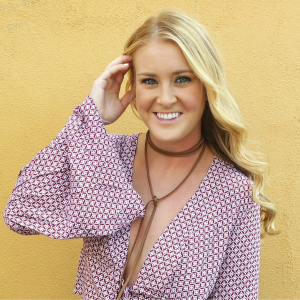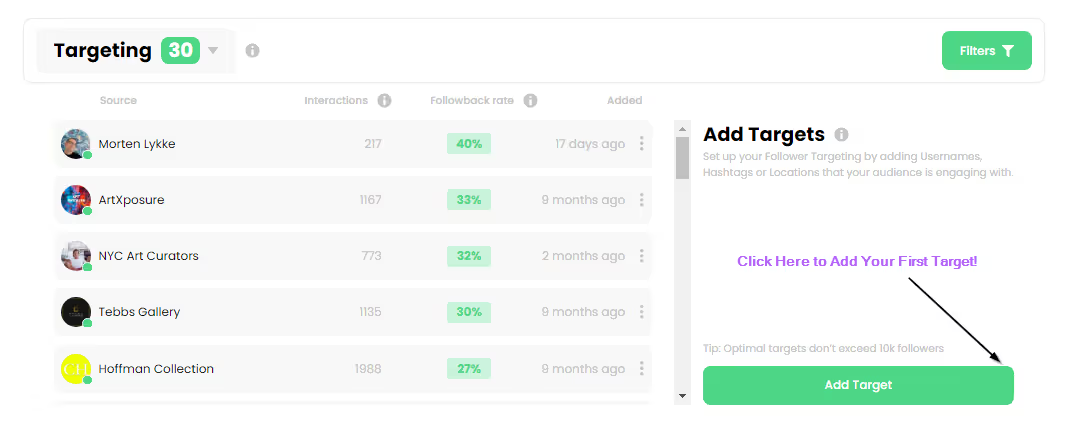
How Much Do Instagram Ads Cost in 2025?


Instagram is a top marketing platform today. With over two billion active users each month and strong advertising tools, it’s vital for businesses and creators. Yet, as competition grows and ad systems evolve, a key question arises: What will Instagram ads cost in 2025?
The answer isn’t simple, and that’s understandable. Instagram ad costs depend on several factors. These include your campaign goals, audience targeting, creative quality, and market demand. Prices also differ by ad format, such as Reels, Stories, and carousels, each aimed at a different engagement style.
This guide on Instagram ads will clarify the process. You’ll discover how ad costs are set, what affects them, and how to maximise your advertising budget.
Why Instagram Ads Matter in 2025
Instagram ads are more than paid posts. They build visibility, engagement, and strong brand connections. In 2025, the platform remains at the forefront of social advertising, seamlessly combining creativity with precise data.
What makes Instagram powerful is its ability to blend visuals, storytelling, and performance tracking. Businesses can share their stories while measuring results in real time. This balance between creativity and analytics keeps Instagram at the heart of modern marketing.
To stay ahead, marketers must understand effective Instagram marketing strategies. The goal is not to chase quick exposure but to build trust with people who truly care about your brand. This detailed Instagram ads guide will clarify the process.
{{blog-cta-section}}
Reach & Engagement
Instagram has one of the highest engagement rates of any social network. People spend more time liking, commenting, and sharing than they do on most platforms. This creates huge potential for advertisers who want real interaction.
With the right plan, your ads can reach broad or niche audiences easily. AI tools and audience segmentation help match your message to the right people. Kicksta, for example, connects your content with users who already engage with similar brands. This organic targeting improves engagement and lowers costs by reaching people who already care about your message.
Why Businesses Invest in Instagram
Brands invest heavily in Instagram because it mixes visual creativity with measurable sales performance. It helps companies grab attention and track every click or purchase. Both small shops and global brands can build campaigns that fit their goals.
The rise of branded content ads in 2025 makes Instagram even more valuable. These ads enable brands to amplify influencer posts for increased reach. For instance, a fashion brand might collaborate with a creator to promote a new line, then repurpose that post into a paid ad to reach a broader audience. This method combines influencer trust with Instagram’s precise targeting system.
New Placements
Over the years, Instagram has introduced new ad placements that serve different purposes. In 2025, advertisers can choose from Feed, Stories, Reels, Explore, and search placements. Each option caters to unique user behavior.
- Feed ads suit product showcases and storytelling.
- Reels ads perform best for entertainment and discovery.
- Story ads work well for flash promotions or announcements.
- Instagram Explore tab ads reach new audiences browsing for inspiration.
With tools like Kicksta analytics, brands can identify which placements perform best. If Reels bring more engagement, focus there. If Stories drive more sales, adjust your budget accordingly. This data-driven approach saves money and boosts results.
Ad Auctions & Bidding Strategies
Instagram ads work through an auction system. When an ad space opens, different brands bid for it. But the highest bid doesn’t always win. Instagram rewards ads that have strong quality and relevance.
You can select bidding methods such as “lowest cost,” “cost cap,” or “bid cap,” depending on your goal. The key is balance. You want to spend wisely while keeping your ads visible. Smart bidding helps you reach the right audience without raising costs.
AI in Ad Targeting

Artificial intelligence now shapes almost every part of ad delivery. It studies user habits, interests, and even predicts behavior to serve the most relevant ads.
Kicksta supports this by showing which of your followers engage most often and what kind of content draws their attention. Together, AI and Kicksta insights give you a clear picture of how to target people efficiently. This combination makes campaigns more accurate and affordable.
Instagram Ad Cost in 2025
The cost of Instagram advertising varies depending on multiple factors, including industry, audience, format, and seasonality, all of which play a part. However, general trends from 2025 reveal clear averages and benchmarks that advertisers can use to plan effectively.
Average Cost Per Click (CPC)
The Cost Per Click (CPC) on Instagram in 2025 usually falls between $0.80 and $2.50. This varies based on your target audience, competition, and ad quality. Industries like finance and technology often face higher CPCs because they compete for valuable customers. On the other hand, lifestyle, fashion, and beauty brands, as well as popular travel Instagram accounts, usually pay less. Their audiences are broader and more engaged, which helps lower overall advertising costs.
Your ad’s relevance and engagement also affect CPC. Ads with positive interactions, like clicks, saves, or shares, gain higher relevance scores. This can lower your cost per click over time.
{{blog-cta-section}}
Average Cost Per 1,000 Impressions (CPM)
In 2025, CPM ranges between $7 and $12. A lower CPM means your ad is relevant and engaging. Using clean visuals and short, emotional messages helps lower your cost per view.
Study your engagement data to see which visuals or posts your audience loves most. Reusing those ideas in ads improves awareness and keeps your costs stable.
Cost Per Engagement (CPE)
For actions like shares or saves, CPE costs between $0.10 and $0.70. Ads that encourage people to comment or interact perform best under this model.
Analyzing which posts start conversations helps you make ads that feel real, not forced. These ads bring better engagement for less money — a strategy emphasized in social media ad performance metrics that focuses on genuine interaction over vanity numbers.
How Instagram Advertisement Costs Vary
There’s no single formula for ad costs. Everything matters: your campaign goals, creative quality, audience size, and competition. Awareness campaigns often cost less, while conversion-focused ads are more expensive because they target buyers ready to act.
Competitive industries like real estate or finance usually pay more. Niche markets, like local services or fashion, often enjoy lower ad costs and better engagement.
Campaign Objective
Your campaign goal shapes how much you spend. Awareness campaigns are cheaper because they aim for impressions, while conversion ads cost more because they focus on purchases or sign-ups.
Kicksta can help you choose the right goal by analyzing your audience. If people engage often but rarely buy, focus on conversion ads supported by retargeting.
Audience Size, Demographics, and Competition
Broad audiences tend to cost less per impression but produce lower-quality leads. Niche audiences cost more but offer better engagement.
By comparing demographic insights, marketers can find the sweet spot, an audience large enough for reach but specific enough for meaningful engagement.
Ad Quality
The quality of your ad affects everything. Instagram rewards creative, high-performing ads with lower costs. Poor-quality ones pay more to reach fewer people.
Kicksta’s insights reveal which of your posts perform best, enabling you to create similar ad content that feels familiar and trustworthy to your audience — a concept supported by ad relevance optimization that highlights how engaging, well-targeted creatives reduce costs and improve overall campaign performance.
Landing Page Experience
The experience users have after clicking matters. If your landing page is slow or irrelevant, your campaign’s performance suffers.
Analyzing visitor flow can reveal where users drop off. Improving page speed, content alignment, and mobile optimization ensures that each click leads to a stronger conversion path, maintaining both ad performance and efficiency.
{{blog-cta-section}}
Seasonality and Timing in the Auction
Seasonal trends have a significant impact on Instagram ad costs. Prices often rise during high-demand periods such as holidays, major shopping events, and product launches.
Advertisers compete more aggressively during these times, driving bids higher. Planning campaigns in advance and running them during off-peak periods can help maintain visibility while keeping costs manageable.
Peak Periods
During high-demand times like Black Friday, New Year’s, and back-to-school seasons, ad costs often surge by 30 to 50 percent. Engagement-tracking tools can help you identify quieter periods when your audience remains active but competition is lower, the perfect time to run cost-efficient campaigns.
Ad Placement and Format
Ad placement and creative format have a direct impact on cost and performance. Reels ads often provide a broader reach at a lower price because they align with short-form, high-engagement content. However, they require regular updates to stay relevant. Feed ads usually cost more but deliver consistent visibility and higher conversion potential, insights that align with Instagram ad placement strategies showing how choosing the right format helps balance reach, engagement, and ROI.
Story and Explore placements fall in between, offering strong engagement for timely campaigns. Testing multiple placements helps you identify where your audience interacts most, ensuring that every dollar spent achieves meaningful results.
How Much Should You Spend on Instagram Ads?
Your spending depends on goals, audience, and overall, create a complete guide to Instagram marketing. There’s no fixed rule, but thoughtful planning ensures every dollar helps you grow.
Start small, test, then scale up. Use your early data to find what works before increasing your budget. This method keeps spending focused and effective.
Small Business vs. Enterprise Budget
Budget expectations vary widely between small businesses and large enterprises. For small businesses, a budget of $300 to $1,000 per month is often ideal. This range enables you to test various ad formats, refine audience targeting, and analyze which campaigns yield the best results without risking overspending. The focus at this stage should be on learning, understanding audience behavior, testing creatives, and building a foundation for future scaling.
Enterprises, on the other hand, typically invest $20,000 to $100,000 per month or more. Their budgets support broader objectives such as brand awareness across regions, multi-layered campaigns, and influencer partnerships. Larger spending also enables advanced testing, data collection, and campaign diversification. Regardless of business size, success stems from closely tracking performance and adjusting strategies based on results, rather than focusing solely on the amount spent, a mindset emphasized in marketing budget optimization strategies that prioritize efficiency, adaptability, and measurable impact.
Instagram Budget Breakdown

A good rule is 60% for ad delivery, 25% for creative production, and 15% for testing. Before scaling, run an Instagram audit using tools like Kicksta. This helps identify genuine followers, assess engagement quality, and determine overlap, ensuring your ads reach real people instead of bots.
How to Reduce Instagram Ads Cost and Maintain Results
Reducing Instagram ad costs while maintaining performance requires strategy and consistency. Create relevant content, target the right audience, and refine campaigns. Test and optimise regularly.
Ongoing analysis of engagement data and creative performance shows what works best. This helps you achieve strong, lasting results without overspending.
Smart Targeting and Retargeting
Smart targeting means reaching the right people at the right time. Kicksta identifies users who already engage with accounts similar to yours, providing a natural foundation for effective paid campaigns. Retargeting those who have interacted before, through website visits or previous ad clicks, keeps your brand top of mind.
This blend of new audience discovery and retargeting efficiency minimizes wasted spend while maximizing engagement potential.
Improve Your Ad
Great ads are clear, creative, and emotional. Use clean visuals and strong calls to action. High-quality, simple images that match your brand perform better than cluttered designs.
Try A/B testing different versions of your ad to see what your audience prefers. These Instagram hacks help you fine-tune your visuals and copy for higher engagement.
{{blog-cta-section}}
Use Clear Visuals
Your visuals should represent your brand identity while staying simple and easy to understand. Avoid cluttered compositions and focus on one clear message per ad. Use imagery that aligns with your tone, whether that’s friendly, luxurious, or informative, and maintain consistency across all placements.
Testing different visual styles, such as lifestyle photos, product demos, or types of aesthetics, can help you discover what resonates best with your audience and drives higher engagement.
Continuously Improve Campaigns
Ongoing improvement is the foundation of successful advertising. Review your campaigns regularly to determine which formats, captions, and visuals yield the best results, and adjust accordingly. Experiment with variations in tone, timing, and placement to uncover hidden opportunities.
Data-driven decisions based on impressions, clicks, and engagement rates will reveal the patterns behind your most effective content.
The Best A/B Testing Practices in 2025
Modern A/B testing in 2025 has changed a lot. With advanced AI tools, marketers can predict which ad variations will perform best before launching a campaign. These systems analyse historical data, audience behaviour, and engagement patterns. They recommend the best combinations of visuals, headlines, and calls to action.
To optimise A/B testing, test one variable at a time. This could be image style, caption tone, or ad placement. Testing one variable helps you see what drives changes in performance. Avoid making too many adjustments at once, as this can confuse results. Use short testing cycles to gather insights quickly. Apply these learnings to new campaigns. Over time, this consistent testing builds a library of successful strategies, a data-driven practice supported by A/B testing frameworks that emphasize precision, iteration, and measurable improvement.
Right Bidding Strategy

Choosing the best bid type helps control spending. Start with automatic bidding to gather data, then switch to manual settings for precision.
Kicksta can show when your followers are most active, so you can bid higher during peak times and lower when engagement drops.
Tools to Track Your Instagram Ad Spend
Efficient tracking is key to any successful Instagram advertising strategy. Knowing where your money goes and what you get back leads to smarter decisions and better returns. Tracking performance using social media KPIs like reach, engagement, and cost per conversion helps you evaluate success clearly and make data-driven improvements.
Meta Ads Manager
Meta Ads Manager remains the most important platform for managing and analyzing Instagram ads. You can view performance by demographic, location, or placement to see which audiences and ad types deliver the best results.
Its detailed reporting tools also allow you to break down data by day, week, or campaign period, making it easier to spot trends over time. Through the platform’s built-in recommendations, you can discover ways to improve delivery or reduce cost per action, reflecting the powerful capabilities of Meta advertising tools
designed to help marketers optimize campaigns with precision and efficiency.
Third-Party Tools
Meta Ads Manager gives detailed metrics for paid performance. In contrast, third-party tools like Kicksta offer a wider view by merging data from various campaigns and platforms. This makes Kicksta a valuable asset for businesses aiming for real growth and better performance.
Kicksta allows advertisers to dig deeper than just basic metrics. It studies audience behaviour and authenticity. It tracks follower engagement patterns, audience growth, and organic reach. This helps you see how your ad campaigns support long-term community building. By understanding user interactions with both paid and organic content, you can make smarter budget choices. You’ll also identify which campaigns draw real, lasting engagement, an approach that aligns with the principles of data-driven marketing analytics for strategic growth.
Do Instagram ad costs change during the year?
Yes, Instagram ad costs fluctuate throughout the year based on demand and seasonality. Prices typically rise during peak shopping seasons such as holidays, major sales events, and product launches when advertisers compete for attention. Costs often decrease during quieter months, providing smaller brands with an opportunity to gain visibility at lower rates. Planning your campaigns around these trends helps you maintain efficiency throughout the year.
What’s the best way to track Instagram ad performance?
The best way to track Instagram ad performance is through Meta Ads Manager, which provides detailed analytics on impressions, reach, engagement, and conversions. For a broader perspective, pairing it with tools like Kicksta offers insights into organic growth and follower behavior. Together, they help you understand both the direct and long-term impact of your ads. Regular tracking ensures your strategy stays data-driven and effective.
How do Instagram ad costs compare with other platforms?
Instagram ad costs are generally comparable to Facebook and slightly higher than platforms like TikTok or Pinterest, mainly due to Instagram’s strong engagement rates and visual appeal. However, Instagram often delivers higher-quality traffic and better brand recognition. The platform’s advanced targeting options and creative flexibility justify the cost for many advertisers. When managed strategically, Instagram’s ROI can outperform most competitors.
Wrapping It Up
Instagram advertising in 2025 brings both great opportunities and new challenges. Prices change frequently, but with the right plan and smart data utilization, you can maintain an efficient budget and achieve strong results. Tools like Kicksta help you understand audience behavior, engagement patterns, and peak activity times so you can make informed choices that stretch every dollar.
Success on Instagram now depends on a mix of creativity and strategy. When you combine powerful storytelling with solid data and a real human connection, your brand stands out even in crowded markets. In the end, effective advertising isn’t about spending the most money. It’s about knowing where your budget yields the best results and learning to adapt to Instagram’s rapidly changing world.





.jpg)